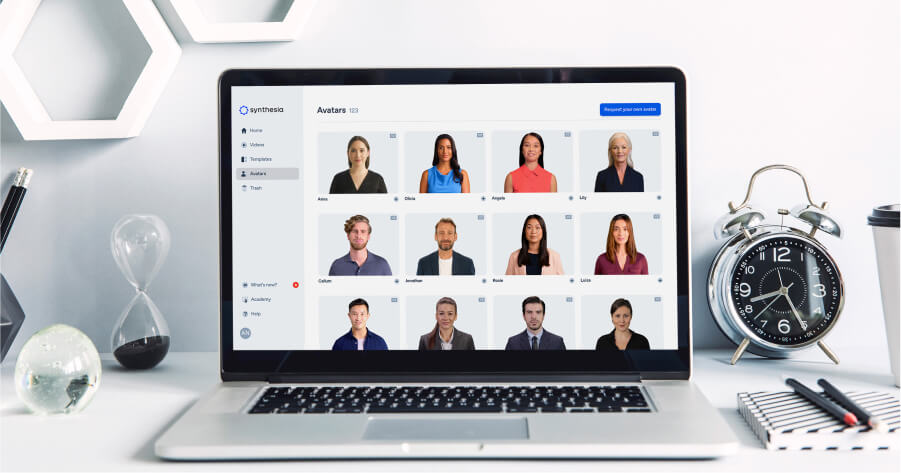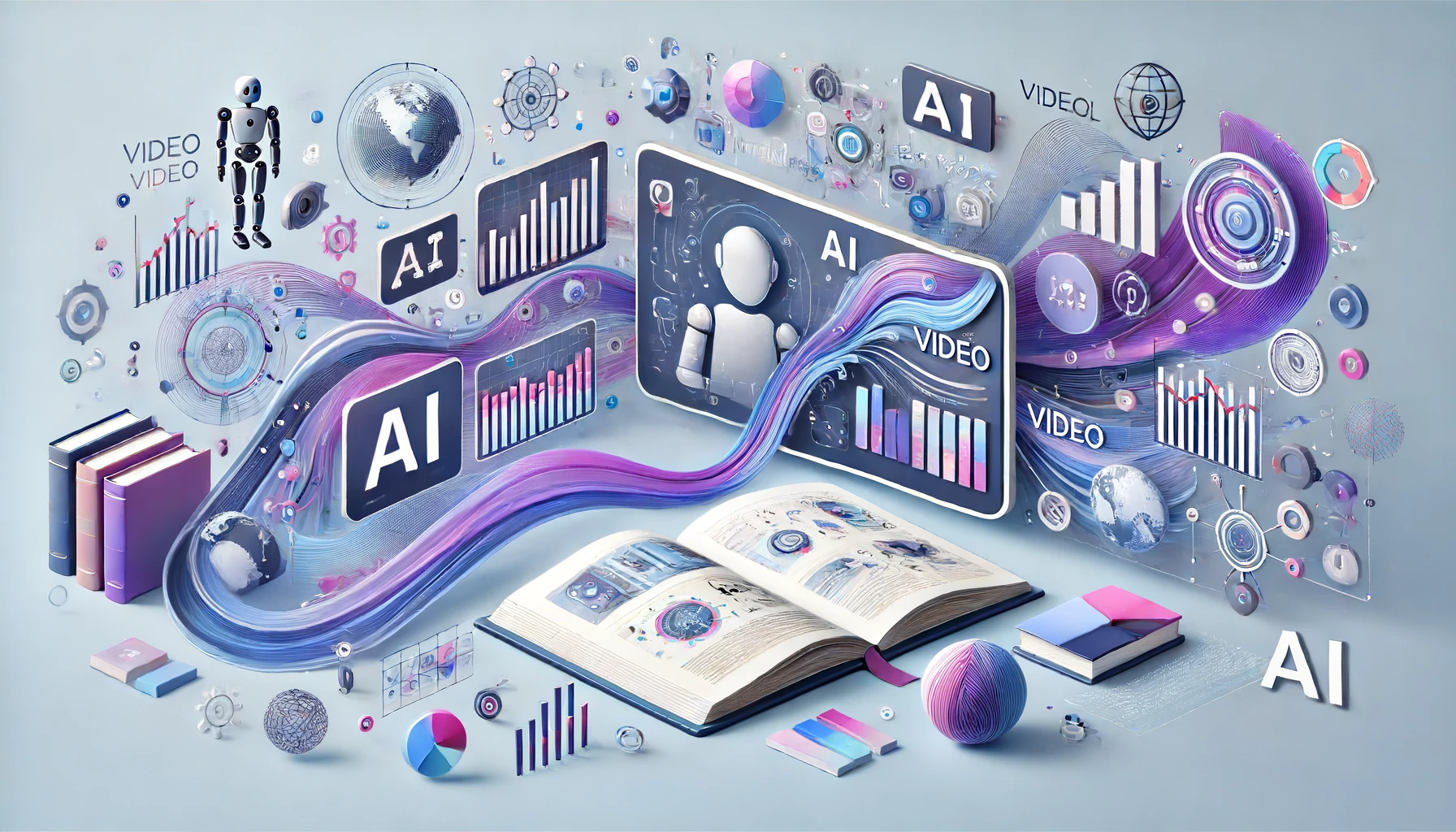
Create AI videos with 230+ avatars in 140+ languages.
We know you can't wait to incorporate interactive training videos in your workplace, and we get it — who doesn't want to say "hasta la vista" to the old, traditional corporate training videos your company has been using since the Big Bang?
Now that you're ready for a brighter future, we want to help you facilitate your trainees' path through your training program. That's why we've compiled interactive videos you can start duplicating and customizing today.
Without further ado, here's a parade of effective videos created with the power of AI and tools like Articulate Storyline.
1. An interactive training video to reinforce customer service in your company
They say communication is key to the success of any relationship, and we couldn't agree more.
This interactive video is your employees' golden ticket to winning over the hearts of your customers and building strong professional relationships with them, as it empowers your team to gain control of the conversation.
In the interactive video example, your customer Joseph has a difficult scenario, and you can choose different approaches to his requests throughout the video. Depending on your answers, the conversation and the outcome will differ.
👉 Why it works:
Like most well-done interactive videos, this example organically trains viewers. Plus, it's easier for learners to apply empathy and interest in Joseph's situation through this direct approach.
Why we like it:
- Short yet detailed.
- Organic, interactive features.
- Personalized learning.
👉 Click here to customize this example.
2. Teach ethics with an interactive training video
What does content moderation actually mean in practice?
This video tackles that question head-on, guiding employees through the ethical considerations and responsibilities behind moderating AI-generated content.
The course kicks off with a clear explanation of why content moderation matters at Synthesia, then breaks down the core principles: ethics-first design, protecting real actors, and maintaining trust with users. It's not just theory either—you’re asked to think critically about what should or shouldn’t be allowed and why.
👉 Why it works:
It’s not often that a training video makes you think harder and feel more aligned with your company’s values. This one encourages reflection on responsibility while still being easy to follow.
Why we like it:
- Purpose-driven.
- Thoughtful and well-structured.
- Uses interactivity to make ethics real.
👉 Click here to customize this example.
3. Use interactive elements to ease the learning experience
Great news! We found an interactive video example where understanding clients' wants and evaluating their feedback is a doddle.
In this interactive training video example, users can individually select the customer testimonial while keeping the training short and entertaining. Help your employees learn about customer service in a few clicks.
👉 Why it works:
We can quickly learn about products and customer service from a friendly face. In addition, interactivity with students is organic.
Why we like it:
- Warm tone for all learners.
- Enjoyable learning experience.
- Appealing graphics and scenes.
👉 Click here to customize this example.
4. Eliminate conflict of interest with this interactive training video
Be aware...there is no turning back once you hit play. After watching this set of interactive videos, you won't want to teach what a conflict of interest is any other way. The training video uses the power of scripting, good visuals, and tools to reinforce what your learners know about conflict of interest.
👉 Why it works:
This video has the best of both worlds. On the one hand, it uses video, graphics, and text to teach us about the topic. On the other hand, we can interact with the video on a personal level.
Why we like it:
- Balance between script and visuals.
- Entertaining and comprehensive, like any YouTube video.
- Matches different learning needs.
👉 Click here to customize this example.
5. The only interactive pop quiz we like
Unlike other examples, this interactive video does not include grade concepts; you apply what you learn to possible scenarios. The procedure follows: First, you are given a frame with a question; you must select the best possible answer from the multiple choice. Once you have chosen the correct answer, you can move on to the next one.
👉 Why it works:
We like that this interactive video is designed to challenge our knowledge based on real situations and scenarios, not concepts. As a plus, it's not your typical boring quiz, thanks to its interactive features.
Why we like it:
- Generates awareness.
- Great graphics that match the interactive tool.
- User friendly.
👉 Click here to customize this example.
6. Spice up your corporate training quizzes with interactive videos
Still doubting whether an interactive quiz can be practical and fun? Challenge accepted.
This safety training video mixes the power of cool features with an engaging script. In the video, you portray a manager who must explain and guide your employees to make the best safety decisions.
👉 Why it works:
Our favorite part is that this interactive training video connects viewers to the story.
Why we like it:
- Simple language.
- Understanding safety protocols is straightforward.
- Engagement.
- Visually stimulating.
👉 Click here to customize this example.
Ready to create your own interactive training video?
Are you feeling inspired yet? After watching these multiple interactive videos created by Synthesia and Articulate 360, we hope you better understand how to improve your training game. Now you must select your favorite, duplicate, or customize it as much as you want.
The benefits of using interactive videos are difficult to argue against. With the right tools and platforms, it takes nothing to create training videos with interactive features.
Click here to try Synthesia's free AI video maker and create your first interactive AI video.
About the author
Strategic Advisor
Kevin Alster
Kevin Alster heads up the learning team at Synthesia. He is focused on building Synthesia Academy and helping people figure out how to use generative AI videos in enterprise. His journey in the tech industry is driven by a decade-long experience in the education sector and various roles where he uses emerging technology to augment communication and creativity through video. He has been developing enterprise and branded learning solutions in organizations such as General Assembly, The School of The New York Times, and Sotheby's Institute of Art.














